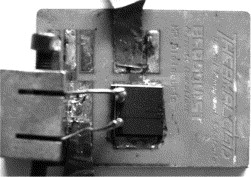InGaP
Modelling and Simulation of Ingap Solar Cells Under Solar Concentration: Series Resistance Measurement and Prediction
Wed, 2010-04-21 14:32 — Hikmat S. Hilal, D.Sc.
Journal Title, Volume, Page:
Solid State Sciences, Volume 8, Issue 5,Pages 556-559
Year of Publication:
2006
Preferred Abstract (Original):
One of the important parameters, that commonly affect solar cell performances, is the series resistance. Such effect becomes more pronounced when working under higher illumination intensities due to higher generated photocurrents. Therefore, it is necessary to predict series resistance effects under such conditions. To know more about the series resistance effect and its interpretation, InGaP based solar cell performances were investigated, using high solar concentration levels (73.36 X, 201.19 X). To facilitate the prediction of series resistance effect, as a function of insolation level, a computerised analytical model, using neural network, is presented.


